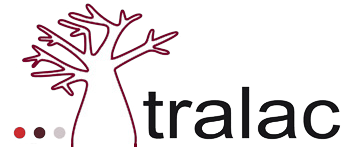Topics publications: Finance and development
Trade Reports
Access to Finance, Mobile Money, and Gender Inclusivity in Africa
The realisation of Africa’s full economic potential is exacerbated by limited access to formal financial services, which hinders the ability of entrepreneurs, especially women, to engage in trade (be it local or cross-border). However, the rise of mobile money services and digital financial innovations in Africa promises to revolutionise the continent’s financial landscape, unlocking greater financial inclusion, access to credit, and opportunities for entrepreneurs, including women. These innovations are set to streamline cross-border trade, enhance financial literacy, and improve access to government payments and social services, fostering economic growth and empowerment. With reduced transaction costs and improved financial security, these digital advancements hold the potential to reshape Africa’s economic future and drive positive change for its diverse populations.
This trade report aims to provide an overview of these financial developments, emphasising gender-related considerations wherever possible. It seeks to explore the implications of enhanced access to finance and digital financial services on women entrepreneurs and their involvement in trade. Furthermore, it will discuss the role of mobile money in economic development, regional integration and payment systems, as well as challenges to financial access and inclusion. Throughout this report, we will highlight the persistent challenges that women face in accessing financial resources and propose strategies to address these issues within the context of Africa’s evolving financial landscape.
Trade Briefs
Does Africa Need a Continental Common Currency?
In March 2022, South African International Relations and Cooperation Minister Naledi Pandor reaffirmed the commitment of her government to a continental monetary union, also known as a ‘common currency’. She said South Africa supports the creation of African monetary institutions – the African Central Bank, African Investment Bank and African Monetary Institute – as pillars of the common currency system that would be implemented. This move, she said, would support continental economic and trade integration, a process already embarked upon with the founding of the African Continental Free Trade Area (AfCFTA).
This trade brief attempts to cast light on the prospect of an African continental common currency by examining the inter-relationships of the types of economic integration arrangements and the economic rationale and potential pitfalls of a single currency. It also discusses the experiences of existing currency areas in Africa and gives an update on the progress towards monetary unification in the ECOWAS and EAC regional economic communities.
Readers are encouraged to quote and reproduce this material for educational, non-profit purposes, provided the source is acknowledged. All views and opinions expressed remain solely those of the authors and do not purport to reflect the views of tralac.
Trade Briefs
IMF Response to Indebtedness in sub-Saharan Africa: Rays of Hope combating the shadow of COVID-19
The state of indebtedness in sub-Saharan African has been extensively detailed in a previous tralac trade brief. That brief showed that the region was already struggling with high levels of indebtedness before the COVID-19 pandemic. Specifically, debt-to-GDP ratios had already been rising sharply before the outset of the pandemic and have only worsened since. It is therefore crucial that countries in the region seriously consider the levels of their debt sustainability and take corrective steps in ensuring that it does not spiral out of control.
Unfortunately, the continent finds itself in this worrying state hardly a decade since the IMF and World Bank launched the Highly Indebted Poor Countries Initiative (HIPC) which slashed the debt burdens of about 30 low-income countries on the continent. Fortunately, there are several International Monetary Fund (IMF) channels available to mitigate the debt burden and provide for debt relief, which will be the focus of this paper.
Readers are encouraged to quote and reproduce this material for educational, non-profit purposes, provided the source is acknowledged. All views and opinions expressed remain solely those of the author and do not purport to reflect the views of

